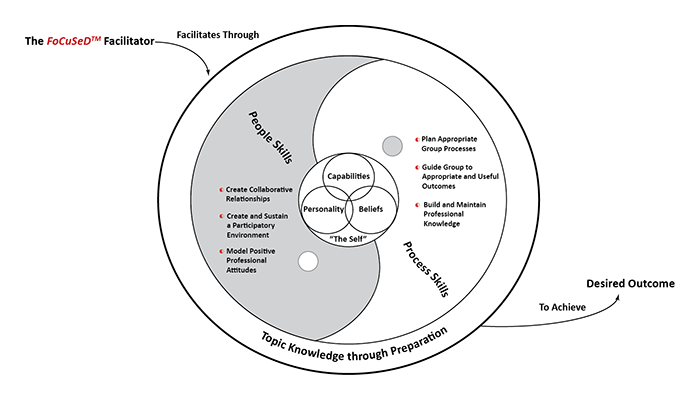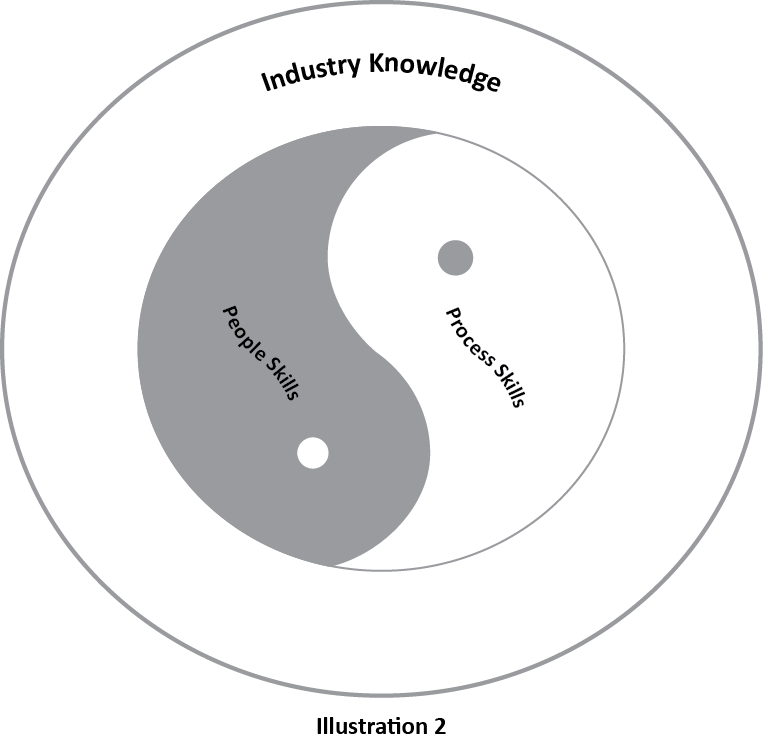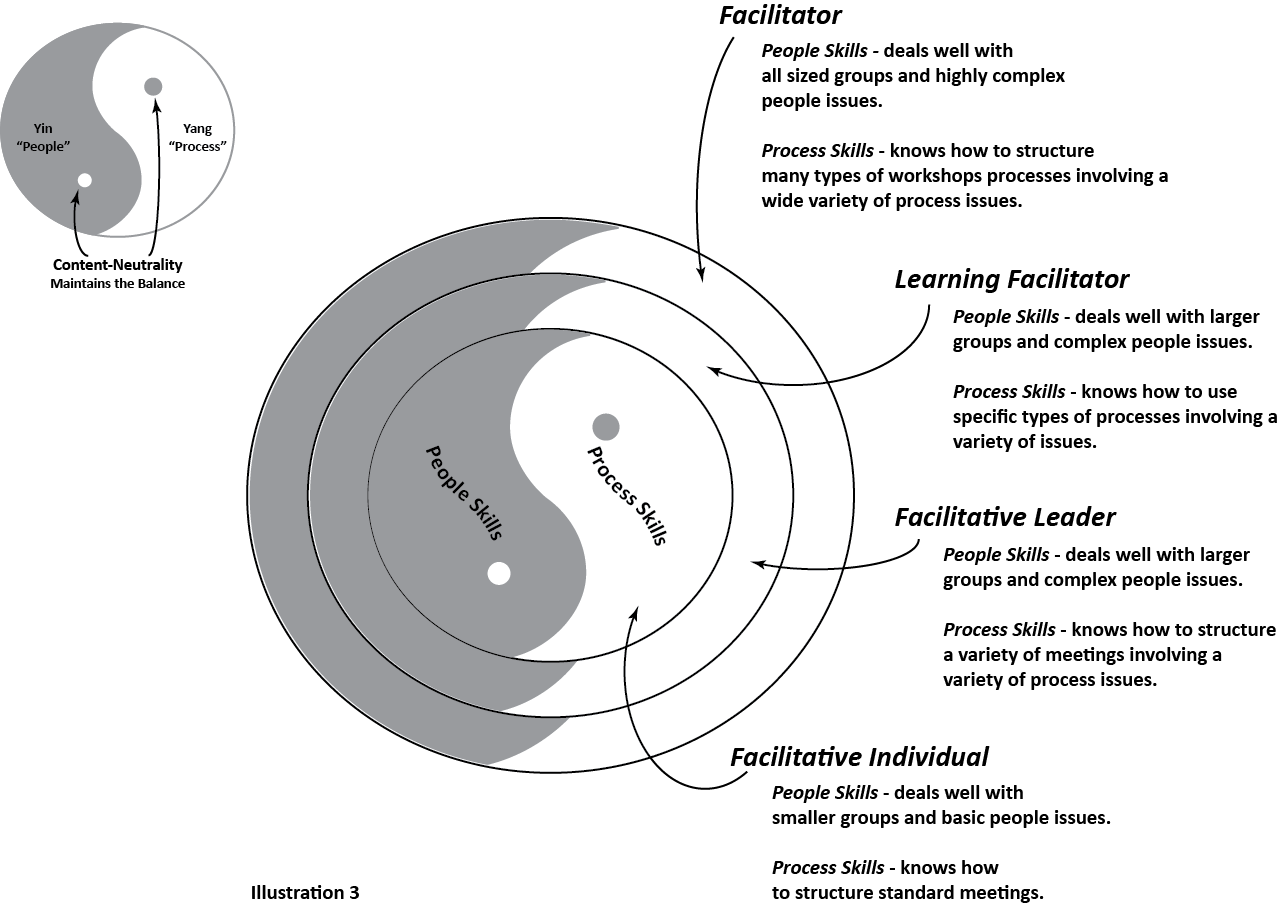August 2013 - The FoCuSeD™ Facilitator eNewsletter

Revisiting my Definition of a Facilitator | Gary Rush Facilitation
I attended the IAF North America Conference in June and walked away with a question, “What is a Facilitator?” It is not that I became confused, but rather that I heard the word “Facilitator” used in ways that it had me seriously revisiting my definition of a Facilitator.
Why? Facilitator
For the past 30 years, I taught that:
“A Facilitator is a content neutral person who guides the group to consensus using effective processes to enable a group to make effective decisions while supporting a collaborative and respectful environment that encourages full participation and helps groups overcome barriers to accomplish their task. The Facilitator is responsible for the context.”
I began revisiting the definition when I described George Washington as being our first Facilitator (see We the People…). I wrote a History of Facilitation that suggested origins in the 19th Century when Architectural Design students would cram together as an intensive effort to finish a project on the back of a cart on their way to class – the cart was called a Charrette. The concept of working as a group resulted and took on the name “Charrette”. This was a precursor to consensus-based workshops. I’ve heard people describe concepts used in facilitation dating back centuries – such as the Talking Stick and Circle Seating used in tribal groups. Were Facilitators around centuries ago? I use the IAF Facilitator Core Competencies to define the core competencies for a Business Analyst, a Project Manager, and a Collaborative Leader. Does that mean that these are Facilitator roles? Or does it mean that Facilitator defines a set of skills? One of my clients has both Mediators and Facilitators in the same office – they are the same people. To differentiate between mediating and facilitating they took a straightforward approach: if there are two people involved, it is mediation; if there are three or more people involved it is facilitation. Does that mean that Mediators are really Facilitators or vice-versa?
Members of the American Society of Training and Development (ASTD) call themselves Facilitators. I define them as Learning Facilitators. The IAF defines an IAF Certified™ Professional Facilitator (CPF) as a “credentialed Facilitator who has demonstrated evidence of meeting the IAF Core Facilitator Competencies”, but the IAF does not define Facilitator.
How? Revisiting Facilitation
The dictionary provides a broad definition, which does not answer my questions nor differentiate the roles. Facilitate is defined as to make easier. A Facilitator is defined as one who makes easier. When I look at what I teach to become a Facilitator, the topics fit into two categories – People Skills and Process Skills (Context). For the Facilitator, these collaborative skills are needed in balance and the balance is maintained through Content-Neutrality (see Illustration 1).

When I apply these collaborative skills to the roles of a Learning Facilitator, a Facilitative Leader, and a Facilitative Individual, even adding Industry Knowledge the roles look alike (see Illustration 2). But for the Facilitator, Industry Knowledge relates to Facilitation – People and Process Skills. For the others, Industry Knowledge relates to the subject they teach or the industry in which they work.
Differentiating the Roles (see Illustration 3):

- A Facilitative Individual – groups they work with tend to be known and their relationship tenure is longer-term. The range of processes they use are related to their job. Industry Knowledge is about the industry in which they work.
- A Learning Facilitator – groups they teach tend to be new and their relationship tenure is shorter-term. The range of processes they use are known and tend to be used repeatedly. Industry Knowledge is the subject(s) they teach.
- A Facilitative Leader – groups they lead tend to be known and their relationship tenure is longer-term. The range of processes they use are related to their job. Industry Knowledge is about the industry in which they work.
- A Facilitator – groups they facilitate tend to be new and their relationship tenure is shorter-term. The range of processes they use can vary with every workshop. Industry Knowledge is about their industry – Facilitation.
I believe that the roles differ in relationship tenure and range of processes, which means that a Facilitator can be any of these roles. The difference is that Facilitators don’t have weeks or months to accomplish their work – they have a shorter time to deal with people and process issues. Facilitators are Leaders for a specific task and a transitory group.

Revisiting my Definition
Looking over my original definition, I find that it is accurate, but it doesn’t clearly delineate the Facilitator role from the other roles. Therefore my new definition of Facilitator is:
“A Facilitator is a content-neutral task leader who forms a group of people into a collaborative team supporting consensus and uses a range of processes to enable the group to accomplish their task. The Facilitator is responsible for the context.”
What does this Mean?
The definition of Facilitator and its use has broadened. What it means is:
- People Skills and Process Skills should be made a core competency for every member of any organization. They need to be taught holistically because People Skills and Process Skills are not stand-alone.
- Facilitators are effective Leaders since they already have highly developed People Skills and Process Skills. They respect the wisdom of the people and the power of the process. They are Collaborative Leaders.
Conclusion
This is why I have been urging the International Association of Facilitators (IAF) to change its name to the International Association of Facilitation (see my homepage video – IAFNA2012 Fast Talk Gary Rush on the Future of Facilitation). Facilitation has branched out beyond what was imagined in 1994. ![]()

